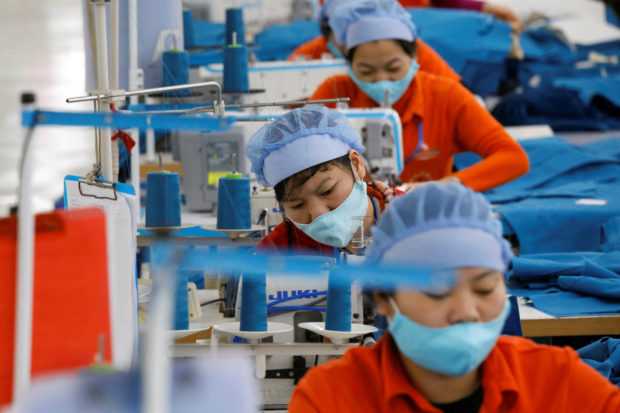PH-S. Korea trade deal seen to boost garment export incomes to $1B in 2025

Women work at Hung Viet garment export factory in Hung Yen province, Vietnam December 30, 2020. (File photo from REUTERS/Kham)
A local group of garment exporters is projecting to reach $1 billion worth in export revenues for garment products in 2025.
It also expressed renewed optimism that the implementation of the Philippines-South Korea free trade agreement (FTA) next year will add enough order volume to reach the target.
Foreign Buyers Association of the Philippines (Fobap) President Robert M. Young on Saturday said they are waiting for the list of products from the export marketing bureau of the Department of Trade and Industry (DTI).
This list contains items that will be eligible for zero tariffs when entering the South Korean market.
“Initially, Fobap is targeting mid to high-priced items such as padded ski and winter jackets, which the Philippines used to produce millions of units way back,” Young said in a message sent to the Inquirer.
Article continues after this advertisementHis trade group are buyers and sellers of these goods.
Article continues after this advertisementIn 2023, Young said the Philippines exported $17.2 million worth of garments in the East Asian country.
He noted that around 80 percent, or about $13.6 million worth of goods last year, are shipments of their members.
For 2024, the FOBAP official said they would be lucky to hit $900 million in global export revenues.
Late last year, Young said they were expecting some decline this year due to falling consumer confidence in the United States, their largest overseas market, leading to clothing and apparel companies having less orders for local producers.
On a positive note, the DTI issued a statement earlier in April this year saying it is working on a draft of an industry roadmap for the local fashion and textile sectors.
The roadmap is expected to provide a clearer picture of the current day challenges and opportunities in the industry, as well as determining the government’s policy direction in developing the sector.
The government agency also said the road map will implement key strategies falling under several pillars dubbed as D.R.E.A.M.
These strategies include the development of the capacity of artisans and designers, raw material investments, establishment of enabling policies and infrastructure support, archiving and documentation, and market stimulus and expansion.